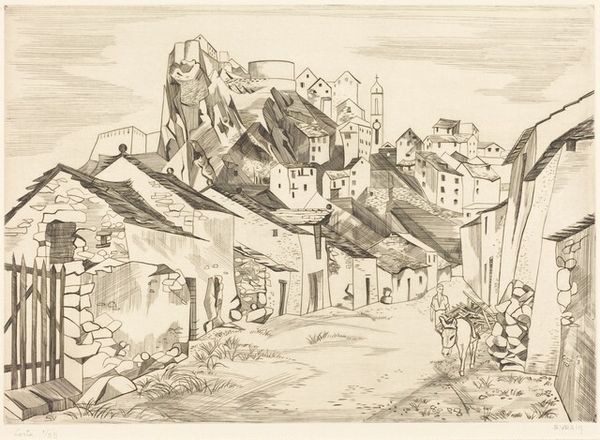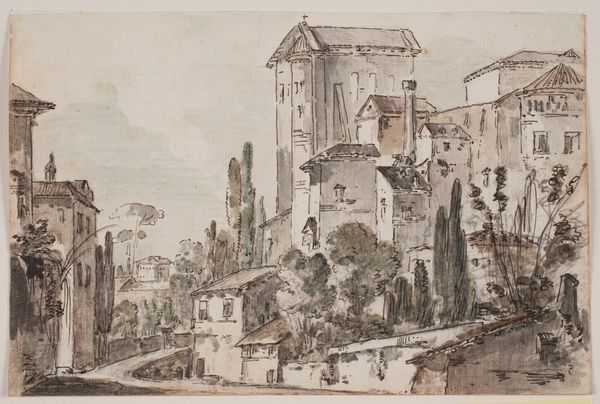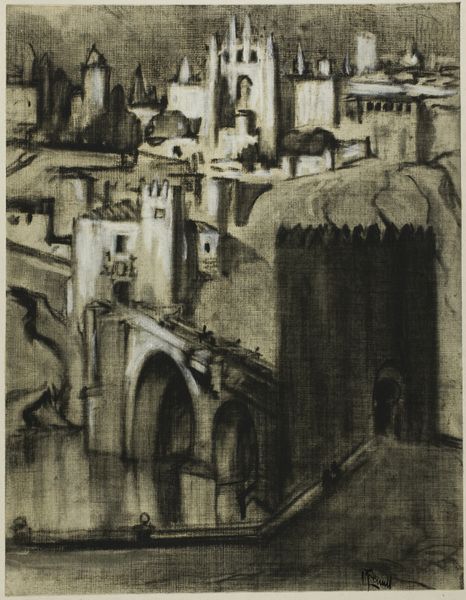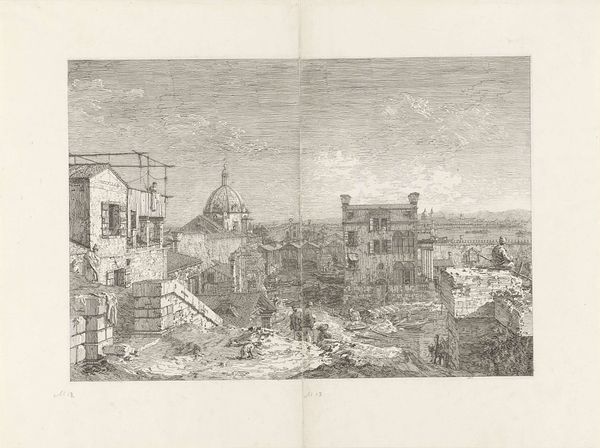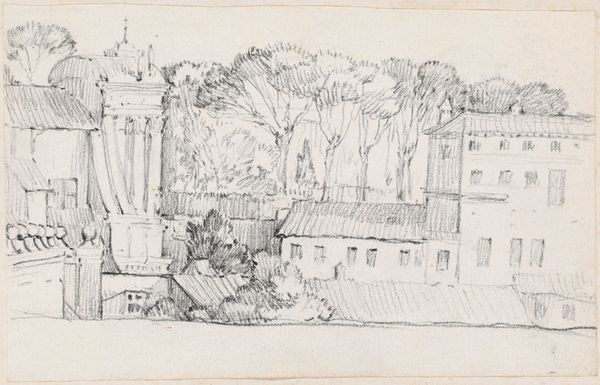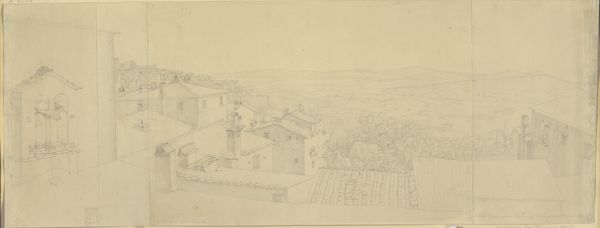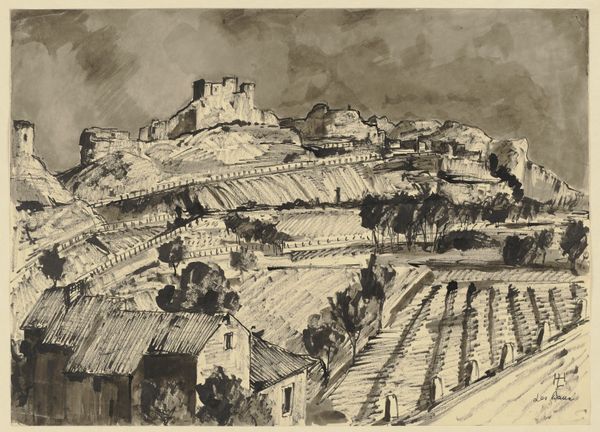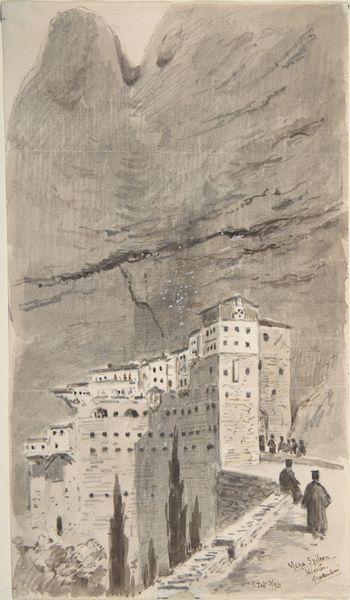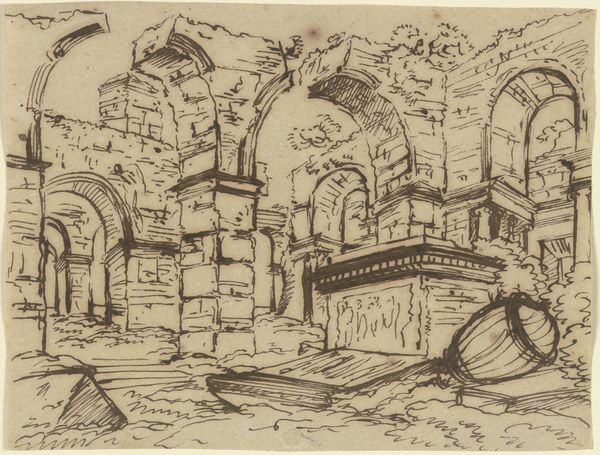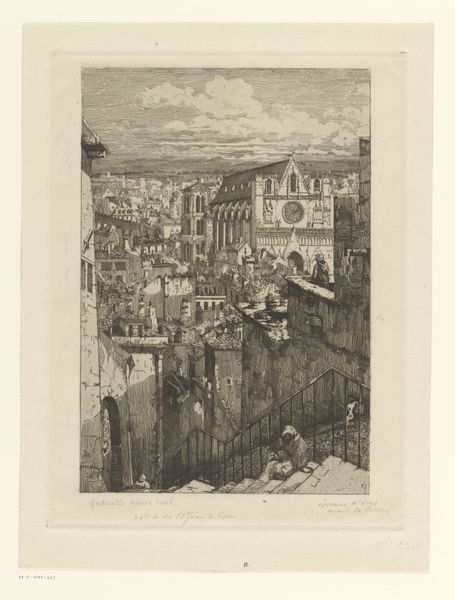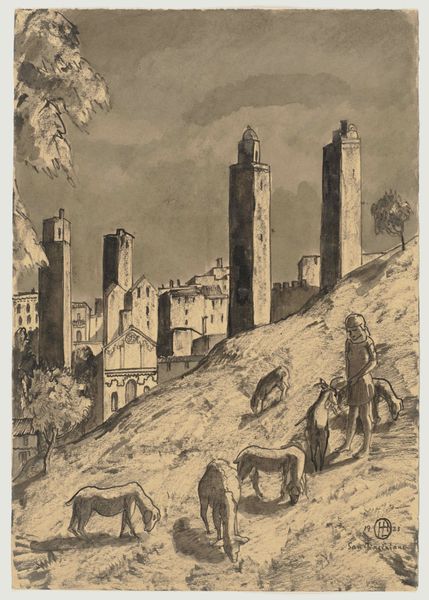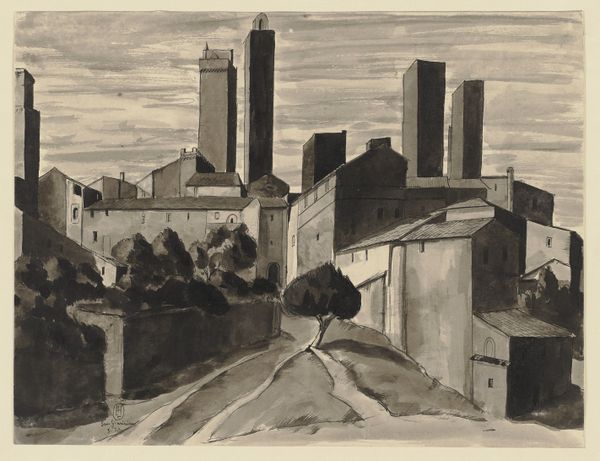
drawing, paper, ink
#
drawing
#
landscape
#
paper
#
ink
#
intimism
#
cityscape
Copyright: Public Domain
Curator: Today we are observing "Gubbio," a 1923 drawing by Hermann Lismann, currently held in the Städel Museum. Executed with ink on paper, this work captures an intimate cityscape. Editor: The stark contrast of the ink creates an interesting melancholic mood, almost oppressive, even. The roofs seem to cascade toward us, yet are devoid of any sense of human presence. It speaks of both enclosure and isolation. Curator: The choice of Gubbio as a subject carries resonance, doesn’t it? Gubbio, located in Umbria, holds deep religious significance—traditionally associated with Saint Francis. Its visual markers, particularly medieval towers, can evoke feelings of fortitude, reflecting the protective aspect of religious identity and local governance. Editor: Absolutely. Lismann composed a spatial tension that makes us think about those social and power dynamics. The rooftops extend to the horizon line and direct our eye to those symbolic medieval towers that seem to punctuate the city like reminders of the power and patriarchy. I imagine that in 1923 the post war, was making them also relevant, reasserting an ancient identity. Curator: Indeed. There’s a certain visual persistence. He uses a range of monochrome washes; buildings are articulated into sharp geometrical shapes and forms as if constructed of simple, unadorned faith. There is very little use of shadow within the streets below, so that attention shifts up toward structures loaded with symbolism and ideological value. Editor: That visual arrangement and clarity are not unintentional! Even the medium, ink on paper, speaks volumes. Think about the availability of the medium, and then look back on the imagery. To me, the intimist lens offers an acute way to scrutinize and subtly criticize prevailing norms. What emerges here, in that regard, is Lismann's critical response to his post-war reality, layered with nuanced observations about place, identity, and control. Curator: Precisely, it speaks to art’s potent capability to be a historical touchstone—carrying within it echoes of resilience and, as you note, quiet acts of dissension and critique. Editor: That's why situating this intimate portrayal of Gubbio within broader sociocultural dialogues, opens our experience and enables conversations about history and current social problems. It has made my experience today truly remarkable. Thank you. Curator: Agreed.
Comments
No comments
Be the first to comment and join the conversation on the ultimate creative platform.
